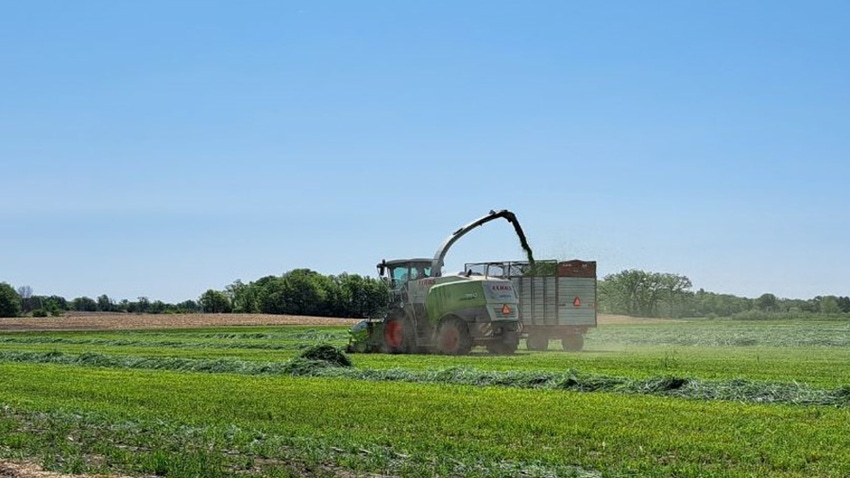
Beef and dairy producers continue to face high forage costs. Growing alternative forages economically is a strategy for boosting feed inventories and lowering overall feed costs, says Richard Halopka, Extension crops and soils agent in Clark County, Wis.
Cover crops and alternative forages also provide extra insurance in case drought or winterkill wipes out your main forage sources. Halopka advises farmers who harvest crops in late July, August or September to consider planting cover crops. This includes grain such as wheat or oats, canning crops such as snap beans or sweet corn, and corn silage.
“You could seed all of your wheat and corn silage acres with cover crops in August and September,” he says. “Then if your alfalfa isn’t damaged by drought or winterkill, next May you can choose to harvest maybe only half of your cover crops. But — and this is the important part — if you are short on feed, you can harvest all of your cover crops and have plenty of feed.”
Halopka says cover crops give dairy and beef producers feed options.
“Rye and triticale are great to seed in the fall and then harvest for feed in May,” he says. “The triticale doesn’t mature as fast as annual rye, which gives you a bigger window for harvesting in May when you have lots of other things to do. But you are going to probably give up some tonnage with triticale compared to cereal rye. We can feed it to heifers, dry cows and beef cattle, and save the really good forages for the milking herd.”
Economical feed options
Halopka advises farmers looking for an economical way to boost their forage inventory to seed cereal rye in September or October. “You can chop it or make baleage,” he explains. “It’s a great forage.”
Halopka says another option is to plant oats in August and chop or make baleage in mid- to late October for forage this fall.
Farmers who harvested first-crop alfalfa that didn’t turn out as good as they had hoped can tear up the field and seed in a brown midrib sorghum-sudangrass.
“The BMR sorghum-sudangrass hybrids are more digestible than the regular hybrids, and you will get great tonnage if we have a hot, dry summer, which it seems to be shaping up that we might,” he explains. “Sorghum-sudangrass is a good option if you need feed now and the weather is drier and warmer than normal. Sorghum-sudangrass doesn’t like cool temperatures.”
Halopka says planting alternative forages helps dairy and livestock producers harvest extra forage before they plant corn for silage in mid- to late May.
“A farmer could seed in annual ryegrass and red clover, and in mid- to late May, they can harvest a nice crop of forage,” he says.
Annual ryegrass and meadow fescue are another option for summer and fall forage, Halopka says.
Halopka has some words of advice for farmers considering planting and harvesting alternative forages to boost their forage inventory.
“Farmers are managers,” he says. “They can manage their crops, but they can’t manage the weather. It’s good to always have a Plan A and a Plan B — and a Plan C, and hope you don’t have to resort to a Plan C, because that’s survival mode. But the important thing is, it’s good as a manager to have options.”
About the Author(s)
You May Also Like






